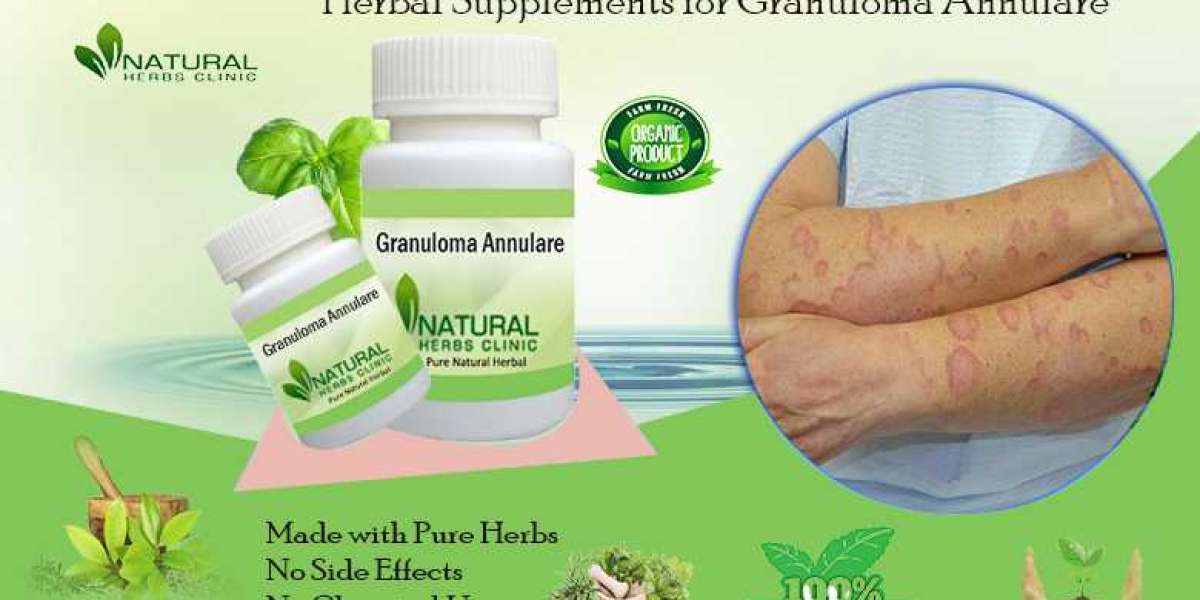Granuloma Annulare (GA) is a chronic skin condition marked by raised, reddish or skin-colored bumps that usually form ring-like patterns. While the cause of GA is not entirely clear, it is believed to be linked to immune system responses or underlying conditions such as diabetes or thyroid disorders. Though granuloma annulare is generally harmless, its appearance can cause concern. In some cases, lesions may be itchy or uncomfortable, prompting individuals to seek treatment.
In this article, we’ll discuss effective treatments and explore the role of supplements for granuloma annulare in managing the condition.

- Topical Steroids
One of the most common treatments for granuloma annulare is the use of topical corticosteroids. These creams or ointments help reduce inflammation, improving the appearance of lesions. Stronger corticosteroids may be prescribed for larger or more persistent patches of skin. Long-term use of potent steroids, however, can cause side effects such as skin thinning, so it’s important to use them under medical guidance.
When to Consider:
- Early or mild granuloma annulare.
- Easily accessible lesions.
- Intralesional Steroid Injections
For localized and stubborn lesions, intralesional corticosteroid injections can be highly effective. In this procedure, a corticosteroid is injected directly into the affected area to promote faster healing. This treatment is especially useful for localized lesions that do not respond to topical creams, though repeated injections may be required.
When to Consider:
- Isolated, thick lesions.
- Lesions unresponsive to topical treatments.
- Cryotherapy (Freezing the Lesions)
In some cases, cryotherapy, which involves freezing the affected area with liquid nitrogen, may be used. This method destroys the tissue in the affected area, allowing healthy skin to form. However, cryotherapy can cause temporary discomfort and may lead to pigmentation changes.
When to Consider:
- Small or localized lesions.
- Lesions that do not improve with creams or injections.
- Light Therapy (Phototherapy)
For more extensive or treatment-resistant cases of granuloma annulare, light therapy (phototherapy) may be an option. In this treatment, the skin is exposed to controlled doses of ultraviolet (UV) light, which can help reduce the appearance of lesions. Multiple sessions are often required to see results, and this should be done under the supervision of a dermatologist.
When to Consider:
- Widespread granuloma annulare.
- Lesions that do not respond to more conventional treatments.
- Systemic Medications
In severe cases of granuloma annulare, systemic medications like oral corticosteroids, antimalarial drugs (e.g., hydroxychloroquine), or immune-suppressing medications may be necessary. These drugs help reduce the body's immune response, leading to a decrease in inflammation. However, systemic medications come with a higher risk of side effects and must be closely monitored by a doctor.
When to Consider:
- Severe or widespread granuloma annulare.
- Lesions that do not improve with topical or localized treatments.
- Supplements for Granuloma Annulare
Though not a primary treatment, some believe that certain Pure Health Supplement for granuloma annulare may support overall skin health and reduce inflammation. While research in this area is limited, supplements that boost the immune system and have anti-inflammatory properties might help manage the condition alongside traditional treatments.
Popular Supplements to Consider:
- Vitamin D: Known for its role in immune system regulation, vitamin D may help reduce inflammation in granuloma annulare. Some studies have shown that individuals with chronic skin conditions, such as eczema and psoriasis, may benefit from vitamin D supplementation.
- Omega-3 Fatty Acids: Found in fish oil, omega-3 fatty acids are well-known for their anti-inflammatory properties. They may support skin health and reduce inflammation, potentially alleviating the symptoms of granuloma annulare.
- Turmeric: Turmeric contains curcumin, a compound with strong anti-inflammatory and antioxidant effects. Some patients with chronic inflammatory conditions have reported improvements in their symptoms after using turmeric supplements.
- Zinc: Zinc is another essential nutrient for maintaining healthy skin and immune function. While not directly linked to granuloma annulare, zinc supplementation may support the body’s natural healing process.
It’s essential to consult with a healthcare provider before starting any supplements, especially if you are already undergoing treatment for granuloma annulare.
- Natural Remedies and Supportive Care
In addition to supplements, some patients have explored natural remedies for granuloma annulare. While there is limited scientific evidence supporting the efficacy of these remedies, they may provide relief from symptoms like itchiness or irritation. Common natural options include aloe vera gel, coconut oil, and essential oils such as tea tree oil, all of which may help soothe the skin.
When to Consider:
- Mild cases of granuloma annulare.
- Complementary therapies alongside medical treatment.
- Observation and Watchful Waiting
In some cases, granuloma annulare may resolve on its own without any intervention. For individuals with mild cases that do not cause significant discomfort or cosmetic concern, adopting a “wait-and-see” approach may be a suitable option. The condition can clear up naturally within months or years.
When to Consider:
- Mild lesions that are not spreading.
- Preference for a less aggressive treatment approach.
Best Treatment for Granuloma Annulare: Tailored to Your Needs
The best treatment for granuloma annulare depends on the individual’s unique circumstances, including the size and location of the lesions, the severity of symptoms, and personal preferences. Some cases may respond well to topical treatments, while others may require systemic medications or light therapy. Working closely with a dermatologist is essential to determine the most appropriate course of action.
Conclusion
Granuloma annulare, though benign, can cause emotional distress or discomfort for those affected. Fortunately, there are various effective treatments available, from topical creams and injections to systemic medications and phototherapy. Additionally, certain supplements for granuloma annulare, such as vitamin D, omega-3 fatty acids, and turmeric, may support the body’s natural healing processes and reduce inflammation. However, it’s essential to consult a healthcare professional to determine the best course of action tailored to your specific condition








